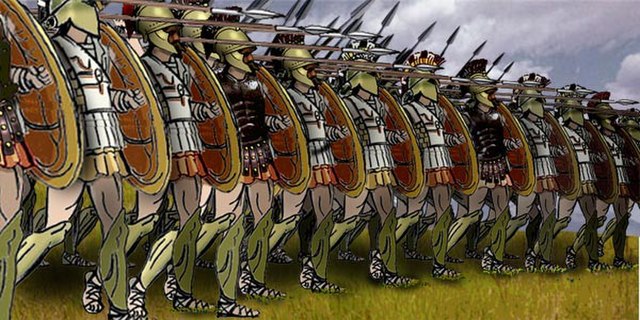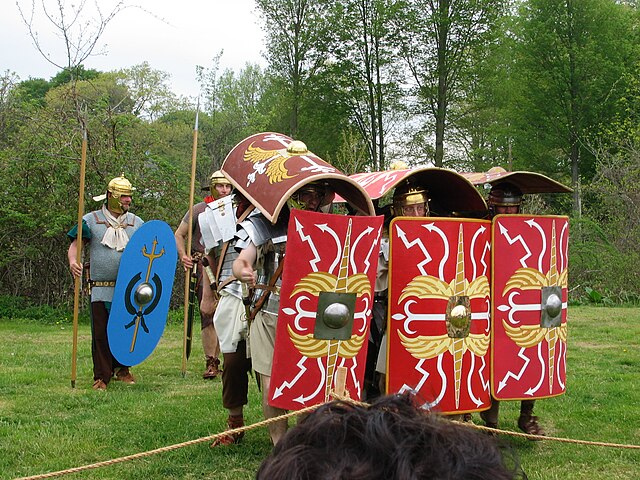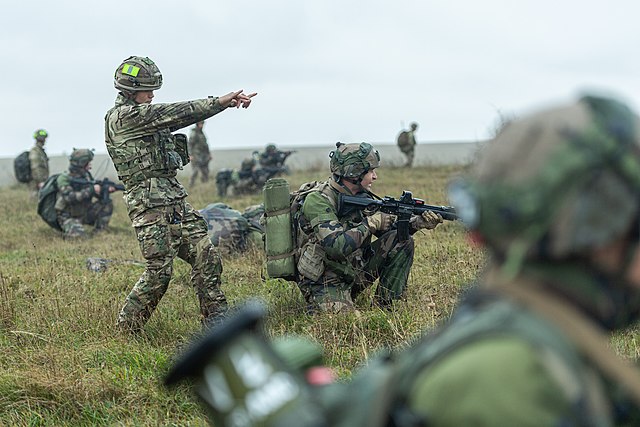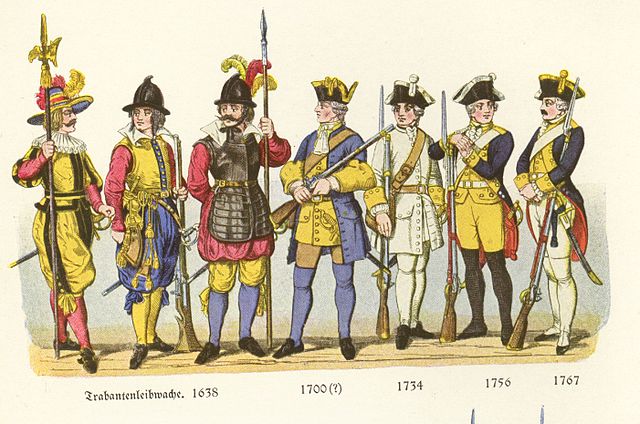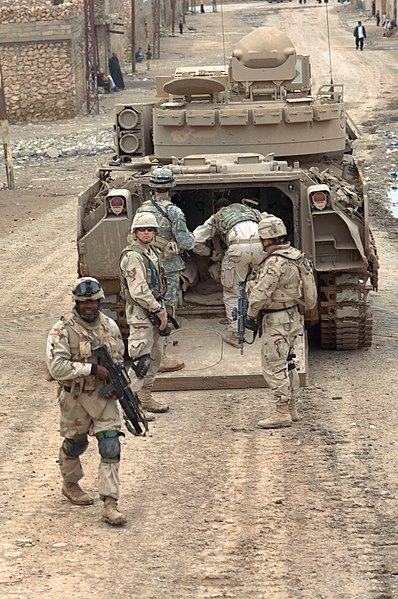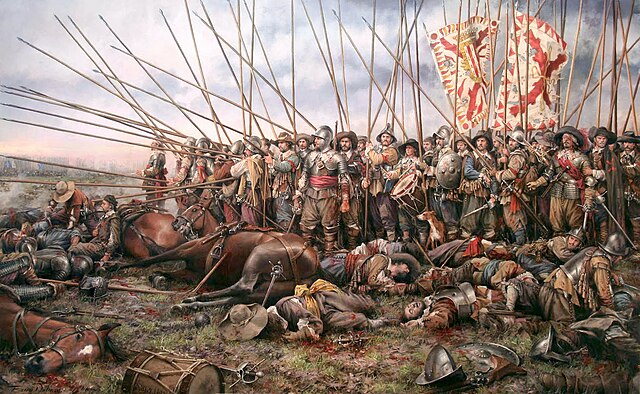Heavy infantry consisted of heavily armed and armoured infantrymen who were trained to mount frontal assaults and/or anchor the defensive center of a battle line. This differentiated them from light infantry who are relatively mobile and lightly armoured skirmisher troops intended for screening, scouting, and other tactical roles unsuited to soldiers carrying heavier loads. Heavy infantry typically made use of dense battlefield formations, such as shield wall or phalanx, multiplying their effective weight of arms with force concentration.
Heavy infantry hoplites of Ancient Greece in phalanx formation
Roman re-enactors demonstrate a variant of the Roman testudo formation
Medieval coat of arms of king Matthias Corvinus of Hungary (r. 1458–1490), guarded by Black Army heavy infantry men. Matthias Church, Budapest. The damaged art relic was renovated in 1893.
Infantry is a specialization of military personnel who engage in warfare combat. Infantry generally consists of light infantry, irregular infantry, heavy infantry, mountain infantry, motorized infantry, mechanized infantry, airborne infantry, air assault infantry, and naval infantry. Other types of infantry, such as line infantry and mounted infantry, were once commonplace but fell out of favor in the 1800s with the invention of more accurate and powerful weapons.
French Army and British Army infantry during a military exercise in 2020
Various infantry of the 17th through 18th century (halberdier, arquebusier, pikeman, and mix of musketeers and grenadiers) of Duchy of Württemberg
Infantry of the 3rd Armored Cavalry Regiment of the United States Army boarding an M2 Bradley IFV in Iraq in 2006
Rocroi, el último tercio ("Roicroi, the last tercio") by Augusto Ferrer-Dalmau, portraying infantry of a battered Spanish tercio at the 1643 Battle of Rocroi

